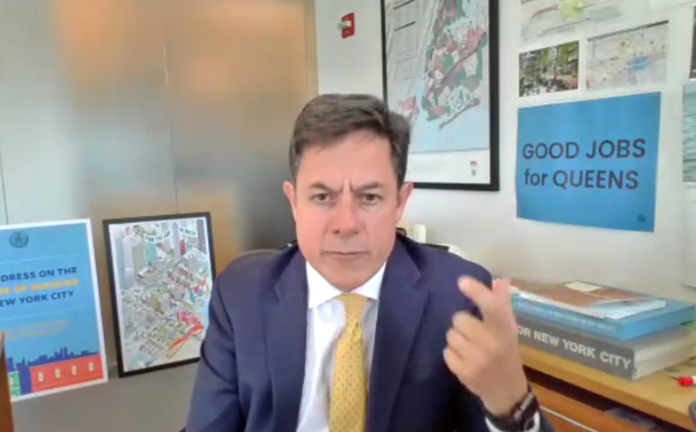Garodnick Says That “City of Yes” Zoning Push Is Nearing Key Vote
Department of City Planning Chair Dan Garodnick told the media about what the “City of Yes” housing amendment would entail, via Zoom, on August 21. He noted that a key vote by the City Planning Commission is slated for September.

The housing zoning amendment formally known as the “City of Yes” is coming closer to fruition, Department of City Planning Chair Dan Garodnick told reporters on August 21. The city is selling the citywide overhaul as a measure that will “build a little more housing in every neighborhood,” in an attempt to combat a low rental vacancy rate that has contributed to a citywide housing shortage.
During a roundtable held by the Mayor’s Office of Ethnic & Community Media–which Straus News attended–Garodnick said that the City Planning Commission is currently reviewing the housing amendment, and is expected to vote on it in September. After that, it will head to the New York City Council for final passage, which is projected to happen before the end of the year.
The zoning amendment is technically the third part of the “City of Yes” package that it takes its name from. Two earlier amendments, which were tied to decarbonization and small business growth, have already passed.
Much of the roundtable was a capitulation of earlier presentations on the amendment. The headline issue that necessitates the amendment, Garodnick said, is the aforementioned rental vacancy rate sitting at one-and-a-half percent–the lowest it’s been since 1968. A healthy vacancy rate, he later clarified, is well north of five percent. By altering zoning laws in ways that correlate to the different densities of different neighborhoods, Garodnick believes, that vacancy rate could shift in a positive direction.
Garodnick added that there were “93,000 homeless people” counted in New York last year. A total of 33,000 of those were kids who slept in the shelter system. With more affordable housing construction, the theory goes, that number could be reduced. The zoning amendment would also create 260,000 jobs in the construction sector, according to city estimates.
The high-density portion of the amendment, which would affect Manhattan, will be oriented around something called Universal Affordability Preference (UAP). This would replace the current regime of Voluntary Inclusionary Housing (VIH); it would allow developers to increase the amount of housing units per building by 20 percent, as long as they’re permanently affordable. That affordability requirement will be set at 60 percent of a given area’s median income.
Garodnick went on to make the striking claim that, if UAP was in place beginning in 2014, an additional 20,000 “income-restricted affordable homes” could have made been made available to New Yorkers.
He also touched on the proposed amendment’s infill provision, which has proven slightly controversial for its opponents. It’s notably drawn the ire of City Council Member Christopher Marte, who represents Downtown Manhattan, and is who is now facing a primary challenger that supports housing development.
The provision would allow for more housing construction on campuses, such as NYCHA spaces, which some residents worry will affect the character of their homes. Garodnick pointedly said that this infill is intended be “contextual,” which means consistent with the preexisting structures on these campuses.
One of the most prominent changes, which would be instituted citywide, is an end to zoning laws that mandates parking spaces in residential developments. As Garodnick was careful to explain, this is not the same as banning such space, and individual developers would still be allowed to prioritize it.
Rather, in the example he went on to give, the end of the mandate would allow for additional residential development that could replace parking. As of now, he said, a developer that wants to build more than ten residential spaces is compelled to add six parking spaces.
If Manhattan residents want to familiarize themselves with the many nuances of the rapidly advancing “City of Yes” plan, they can do so online, at this website. (For print readers, the URL is: www.nyc.gov/site/planning/plans/city-of-yes/city-of-yes-housing-opportunity-applicability-maps.page).